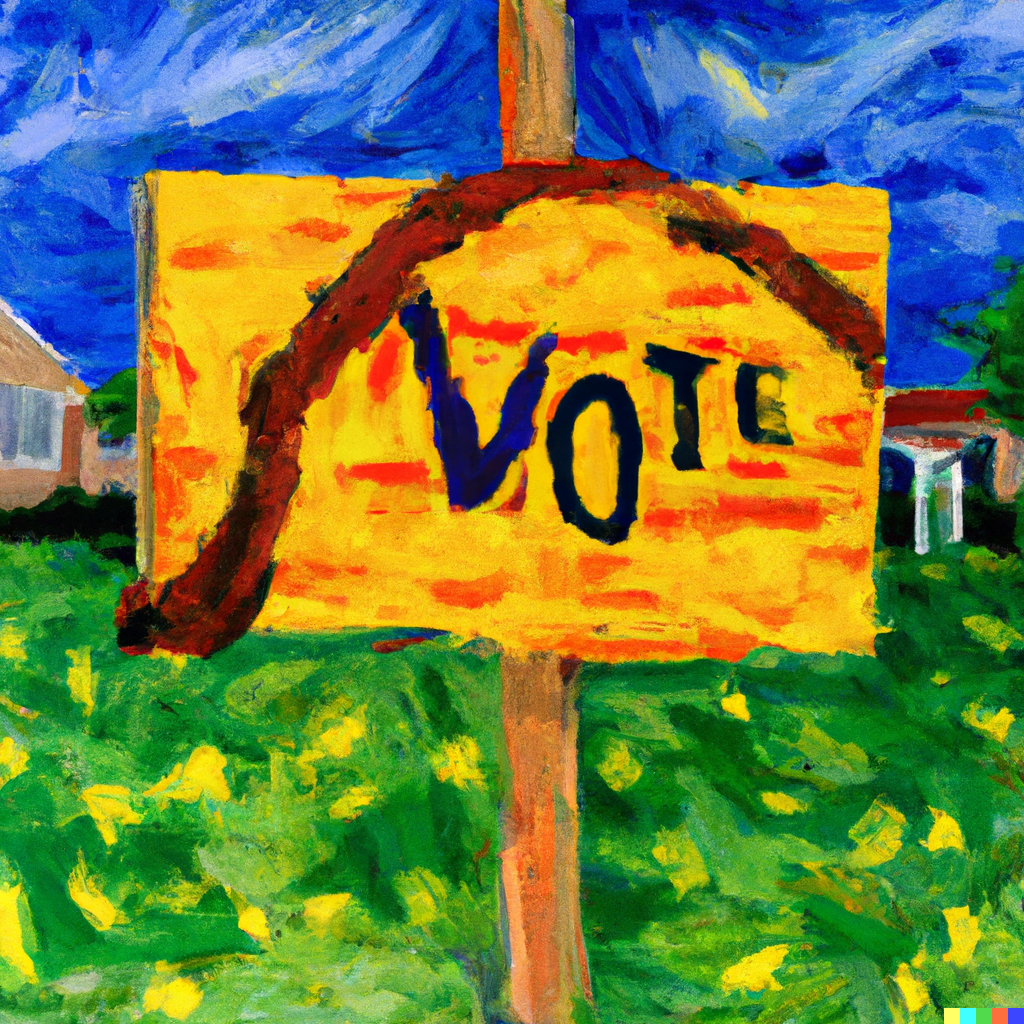A guide to walking precincts

No matter the campaign, no matter the size or scope, and no matter the budget, precinct walking should always be the top activity and priority of the candidate.
Talking directly to voters is the campaign activity that remains unchanged over time, and for a good reason: it's far and away the most effective way to get somebody to vote for you.
If you intend to run a campaign for office, it means you're going to walk precincts. The notable exceptions would be those who have no opponent, and potentially those who live in exceedingly low-density, rural areas (in which case, perhaps it becomes "precinct driving").
Walking precincts sounds fairly easy – and to a certain extent it is. You knock on doors, and you talk to voters. But like so many other things in campaigns, doing it efficiently and effectively is critical. Below is a guide dedicated to helping you do that.
You need campaign collateral
First, you should start with some sort of campaign collateral. That way, if you knock on a door and nobody is home, you at least have something to leave to ensure your effort wasn't completely for nothing.
Some candidates, when they begin their campaign, will print out a few hundred or thousand postcards with their information on it to use as generic handouts. Those can work fine for precinct walking if you already have a bunch, but doorhangers can much more reliably be placed on the doorknob, whereas a postcard doesn't have an obvious resting place. If left on the doorstep, it can blow away.
The good news is that doorhangers can also serve as campaign collateral when you aren't walking. So you can take them to the weekly farmer's market and still hand them out if you want. If you haven't printed anything for your campaign yet in mass quantities, try to just utilize doorhangers.
My preference is for a doorhanger that is 5.5" x 17". This is larger than a standard doorhanger (5.5" x 8.5" or 3.5" x 8.5") you will typically see. It costs a bit more, but stands out a lot more and can include more information, including a perforated tear-off card at the bottom (which I will discuss in a moment).
Be sure to print them on thick, quality cardstock.
In terms of what to include on the doorhanger, here is a general guideline:
- A high quality picture of you on the front, and a different picture on the back
- A brief biography, perhaps a paragraph or two
- A brief overview of your priorities – I will often try to focus on three, each having its own sentence or two going into some depth
- 3-4 endorsements you think are most important
I typically end up putting the endorsements on the side with the biography, because there is generally more room there, but you could also place them on the side with the issue areas as well.
I also try to include a perforated tear-off card as well. On one side should be the mailing address where you want them to be sent, with space for a return address and a stamp. On the other side, you should create a form for the voter to provide their contact information, as well as some options. I generally include:
"Yes, you can use my name publicly as a supporter"
"Yes, you can place a lawn sign in my yard"
"Yes, I will host a community coffee for you"
Keep in mind, most people probably won't offer to host a community coffee for you without having met you yet, but it still doesn't hurt to include it as an option.
The success rate in terms of voters mailing you a card without having met you won't be all that high, but they will be valuable contacts and supporters to have as your campaign evolves if they do return a card.
How to actually walk precincts
You should have a list of voters in your district. If you don't, please find a way to get one. Often, your local registratar of voters or political party can provide one for a cost; otherwise, there are a number of vendors available that provide this data.
Ideally, you have access to a voter database that will allow you to create certain universes of voters. You'll want to only hit registered voters who are likely to vote. You may want to apply other filters as well. If you are running in a partisan race against a member of the other party, it may not make sense to include households that are only full of people of the opposite party. Not because you can't win these voters over, but because the time you spend talking to this household is time you are NOT spending talking to a household with voters more likely to support you.
You don't want to over-filter your list. If you end up with a tiny list of voters, it means most of your time spent precinct walking will be dedicated to walking long distances between houses, which is also inefficient. Ultimately, you want to strike the right balance between having adequate density between houses, but also focusing on voters who have the highest likelihood of voting for you on election day.

When it comes to actually walking, you'll want to wear comfortable clothes. Some candidates might have an instinct to look like a candidate – nicer clothes and even some sort of suit. They abandon this aesthetic very quickly once they start walking and realizing how uncomfortable these clothes can sometimes be.
You should find the sweet spot that maximizes your appearance and comfort, but it's always better to prioritize the latter over the former. Wearing some sort of campaign shirt – such as one with your logo on it – is often a good idea because it conveys very quickly to a voter that you are a candidate and not a salesman (this is sometimes a bug rather than a feature, depending on the voter, however).
I would recommend loading up your car with snacks and water, especially if you'll be walking for many hours and/or in high temperatures. Ideally, you have one of those smaller coolers you can use to keep the water cool in your hot car. In most suburban residential neighborhoods, you can walk down the length of a street and then double back to your car to replenish yourself.
Talking to voters
So now you're all ready to actually talk to voters.
Before you do, we need to set some expectations.
Let's say you have a list of 100 houses to walk for the day. I would guess that out of that list of 100, no more than 30 people will answer the door (and that might be optimistic). There will be more than that who are home, but they are hesitant to answer the door when not expecting a visitor. With the proliferation of Ring doorbells and similar devices, it's even easier to screen out undesired visitors (which you will likely be), making it even more difficult.
Of the people you talk to, very few will talk to you beyond a polite but brief acknowledgement. When it appears the resident is hoping to exit the conversation as soon as possible, try your best to just get your name in and tell them what you are running for, and ask if you can leave them with some material (your doorhanger).
Ultimately, out of your list of 100, there will be a single-digit number of voters you have meaningful conversations with. Unless you've said or done something to offend or upset them, these are the people who will become your reliable voters. After all, when you've met someone, you are much more likely to vote for them.
In addition to your snacks and waters, you should have also have a stack of lawn signs in your car. If you sense you've won over a voter, now is the time to ask "Can I count on your vote?" followed by (assuming they answer in the affirmative) "Can I put a lawn sign in your yard?". In many cases, they'll say yes. It's helpful if you ask if there is a preferred location you should put it in their yard. Usually they won't care.

As an aside, you will occasionally run into the type of voter who is extremely excited to talk to you. They will in fact be so excited they will lose all concept of time, and they will try to talk to you about every issue under the sun for minutes on end. On the one hand, having an enthusiastic and interested voter is a good thing. On the other, time is a precious resource. Try to avoid a discussion longer than maybe five minutes. It's at this point you have probably gotten your point across (and they've probably gotten theirs across!) and you should politely end the conversation.
If you're feeling ambitious, you should try to track where you have lawn signs, just so you can get an organizational understanding of where your support is concentrated.
And if you're feeling extra ambitious, you can supplement these efforts with a follow up post card to every voter you talk to – even the brief interactions – just to help solidify their memory of meeting you.
When you go to print your doorhangers, you can also print a few hundred post cards. They can just have a picture of you on the front with your logo. On the back, half of the card should have room for an address and postage stamp, along with your website. The other half should be space for you to write a note.
I would generally just handwrite a general "It was nice talking to you" message. You won't have a whole lot of space, and you also won't want to strain your wrist writing multiple lengthy messages.
Ideally, you would do this after each session of walking precincts. That way, if you drop them in the mail the next day, they reach the voter quickly while you are likely to be fresh in their mind. More importantly, it prevents a large pile of to-do postcards that will grow ever more tempting to procrastinate on.
Your list of voters should have the name and address for all voters. So when you talk to a voter, you should mark on your list that you had a conversation with them and that they are a likely supporter (unless they told you otherwise). This also helps give you a sense of how many supporters you have, and also ensures you have some pre-existing data on voters if you end up walking this same street again.
By marking those you had a conversation with, you can simply reference the list that evening when writing out your postcards.
What if nobody is home?
So what do you do with the other 70ish houses where nobody answers the door?
Well, you obviously leave the doorhanger. It's unclear how often people notice these when they get home, and how often or how thoroughly they read through them. It's certainly not "never", which is why it's worth leaving one.
As an added touch, you may want to consider keeping the top part of your doorhanger white when you design it. This allows you to write a brief note to the voter letting them know you stopped by and apologize for missing them. It takes about 30 extra seconds to write the message at the door. Again, I'm not sure how often this works, but it's not "never."
Other than that, there isn't a whole lot to do. Be sure you are able to track the voters you didn't talk to on your list of voters (which, if you are tracking the voters you did talk to, you've basically already done) to know that you still need to hit those houses again if you walk that same neighborhood again.
Conclusion
Ultimately, you should be sure to use your best judgement about whether or not to approach certain houses (or even neighborhoods). There are a number of reasons this might be the case, ranging from a house simply looking sketchy, or the presence of signs saying "We shoot strangers on site." Either way, these houses are probably not worth visiting.
There will be a number of random skills you will pick up on this journey. For example, you will become an expert on the hundreds of different types of dog barks that exist. You will also pick up a sixth sense for just knowing in your gut the instances where pressing a doorbell will immediately elicit the sound of 3-4 small yapping dogs.
You will also impress yourself with your ability to very quickly discern whether or not anybody is home. Even if you think someone isn't home, it's still a good idea to stop (just in case you're wrong). But when the day is long and you're getting tired and ready to be done, it's sometimes helpful to be able to quickly skip over the houses that don't appear to be fruitful.
Ultimately, precinct walking is the most important thing you can do as a candidate, so it's important to maximize the time you spend doing it. Hopefully this guide will help you do just that.


Member discussion